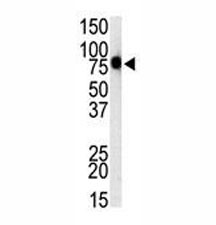Cookie preferences
This website uses cookies, which are necessary for the technical operation of the website and are always set. Other cookies, which increase the comfort when using this website, are used for direct advertising or to facilitate interaction with other websites and social networks, are only set with your consent.
Configuration
Technically required
These cookies are necessary for the basic functions of the shop.
"Allow all cookies" cookie
"Decline all cookies" cookie
CSRF token
Cookie preferences
Currency change
Customer-specific caching
FACT-Finder tracking
Individual prices
Selected shop
Session
Comfort functions
These cookies are used to make the shopping experience even more appealing, for example for the recognition of the visitor.
Note
Show the facebook fanpage in the right blod sidebar
Statistics & Tracking
Affiliate program
Conversion and usertracking via Google Tag Manager
Track device being used

| Item number | Size | Datasheet | Manual | SDS | Delivery time | Quantity | Price |
|---|---|---|---|---|---|---|---|
| NSJ-F44368-0.08ML | 80 µl | - | - |
3 - 10 business days* |
326.00€
|
||
| NSJ-F44368-0.4ML | 400 µl | - | - |
3 - 10 business days* |
702.00€
|
If you have any questions, please use our Contact Form.
You can also order by e-mail: info@biomol.com
Larger quantity required? Request bulk
You can also order by e-mail: info@biomol.com
Larger quantity required? Request bulk
In 1X PBS, pH 7.4, with 0.09% sodium azide. Higher animals establish host defense by... more
Product information "Anti-TLR1"
In 1X PBS, pH 7.4, with 0.09% sodium azide. Higher animals establish host defense by orchestrating innate and adaptive immunity. This is mediated by professional antigen presenting cells, i.e. dendritic cells (DCs). DCs can incorporate pathogens, produce a variety of cytokines, maturate, and present pathogen-derived peptides to T cells, thereby inducing T cell activation and differentiation. These responses are triggered by microbial recognition through type I transmembrane proteins, Toll-like receptors (TLRs) on DCs. TLRs consist of ten members and each TLR is involved in recognizing a variety of microorganism-derived molecular structures. TLR ligands include cell wall components, proteins, nucleic acids, and synthetic chemical compounds, all of which can activate DCs as immune adjuvants. Each TLR can activate DCs in a similar, but distinct manner. For example, TLRs can be divided into subgroups according to their type I interferon (IFN) inducing ability. TLR2 cannot induce IFN-alpha or IFN-beta, but TLR4 can lead to IFN-beta production. Meanwhile, TLR3, TLR7, and TLR9 can induce both IFN-alpha and IFN-beta. Recent evidences suggest that cytoplamic adapters for TLRs are especially crucial for this functional heterogeneity. Protein function: Participates in the innate immune response to microbial agents. Specifically recognizes diacylated and triacylated lipopeptides. Cooperates with TLR2 to mediate the innate immune response to bacterial lipoproteins or lipopeptides. Forms the activation cluster TLR2:TLR1:CD14 in response to triacylated lipopeptides, this cluster triggers signaling from the cell surface and subsequently is targeted to the Golgi in a lipid-raft dependent pathway. Acts via MYD88 and TRAF6, leading to NF-kappa-B activation, cytokine secretion and the inflammatory response. Acts as a coreceptor for M.tuberculosis lipoproteins LprG, LpqH and PhoS1 (pstS1), in conjunction with TLR2 and for some but not all lipoproteins CD14 and/or CD36. The lipoproteins act as agonists to modulate antigen presenting cell functions in response to the pathogen (PubMed:19362712). [The UniProt Consortium]
| Keywords: | Anti-TIL, Anti-Tlr1, Anti-CD281, Anti-Toll-like receptor 1, Anti-Toll/interleukin-1 receptor-like protein, TLR1 Antibody |
| Supplier: | NSJ Bioreagents |
| Supplier-Nr: | F44368 |
Properties
| Application: | WB, IHC, ELISA |
| Antibody Type: | Polyclonal |
| Conjugate: | No |
| Host: | Rabbit |
| Species reactivity: | human, mouse |
| Immunogen: | A portion of amino acids 764-795 from the mouse protein was used as the immunogen for this TLR1 antibody. |
| Format: | Purified |
Database Information
| KEGG ID : | K05398 | Matching products |
| UniProt ID : | Q9EPQ1 | Matching products |
| Gene ID | GeneID 21897 | Matching products |
Handling & Safety
| Storage: | -20°C |
| Shipping: | +4°C (International: +4°C) |
Caution
Our products are for laboratory research use only: Not for administration to humans!
Our products are for laboratory research use only: Not for administration to humans!
Information about the product reference will follow.
more
You will get a certificate here
Viewed



